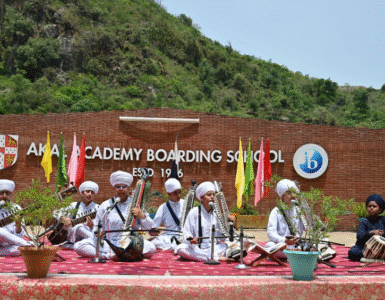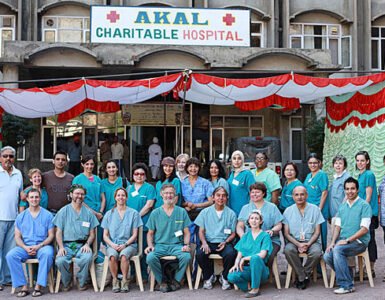Khadoor Sahib – A Treasure Trove of Sikh Heritage
Khadoor Sahib, a historically significant town in Tarn Taran district, Punjab, has received special recognition for its 16th-century Sikh artifacts. The Punjab Department of Cultural Affairs, Archaeology, and Museums has identified two historic structures from the era of Guru Angad Dev Ji, the second Sikh Guru, as heritage sites.
These structures include:
- The Baradari at Gurdwara Tapiana Sahib – A 12-door building where Guru Angad Dev Ji preached Gurbani.
- A Well in Mata Khivi Langar Hall – Built with Lakhauri bricks, similar to Nanakshahi bricks, dating back to the 16th century.
The Historical Significance of Khadoor Sahib
Khadoor Sahib holds immense importance in Sikh history as Guru Angad Dev Ji spent a major part of his life here. It was at this sacred place that:
- He preached Gurbani and developed the Gurmukhi script.
- He established Mal Akhara, a wrestling arena, which was the first of its kind at that time.
- The town is even mentioned in the Guru Granth Sahib, the holy scripture of Sikhism.
Efforts to Preserve Sikh Heritage
The recognition of these historic sites comes after efforts by Baba Sewa Singh, an environmentalist and religious leader from Khadoor Sahib. Concerned about the rapid urbanization threatening heritage sites, Baba Sewa Singh requested the Archaeology Department to survey and identify historic buildings for preservation.
Responding to the request, Rajinder Singh Bath, the state’s lone archaeological officer, visited the town and confirmed that these sites belonged to the time of Guru Angad Dev Ji. His team studied the architectural elements and construction materials, confirming their historical significance.
The Unique Architecture of the Heritage Sites
- The Baradari at Gurdwara Tapiana Sahib – Built with Lakhauri bricks, this structure features 12 doors and served as a preaching site for Guru Angad Dev Ji.
- The Well in Mata Khivi Langar Hall – Named after Mata Khivi Ji, the wife of Guru Angad Dev Ji, who played a vital role in promoting the Sikh institution of ‘Langar’ (community kitchen).
Next Steps – Appeal to the Archaeological Survey of India (ASI)
Recognizing the need for professional preservation, Sikh scholar Raghbir Singh Bains (Canada) and academician Bhagwant Singh Khehra, both associated with Baba Sewa Singh, plan to approach the Archaeological Survey of India (ASI).
💬 “The ASI has the expertise that we don’t have. We hope it will consider our request,” said Surjit Singh Gopipur, Public Relations Officer of the Nishan-e-Sikhi Educational Trust, run by Baba Sewa Singh.
Preserving the Legacy for Future Generations
Baba Sewa Singh emphasized the importance of preserving these heritage structures, stating, “These buildings are our true heritage, which can inspire the young generation that is drifting away from our values.”
With continued efforts, these historic Sikh artifacts at Khadoor Sahib will be protected and cherished for generations to come, ensuring the legacy of Guru Angad Dev Ji remains intact.
Waheguru Ji Ka Khalsa, Waheguru Ji Ki Fateh!
Source: Hindustan Times
















Add comment